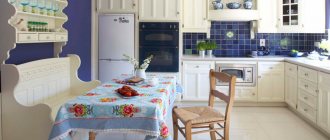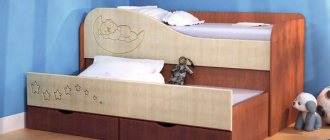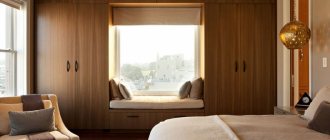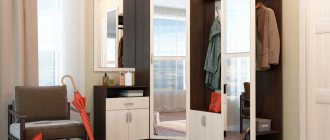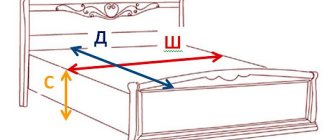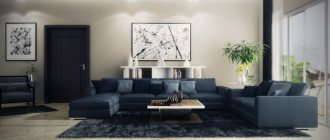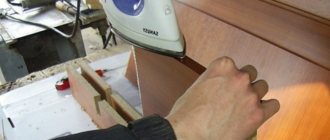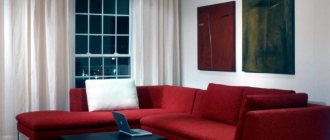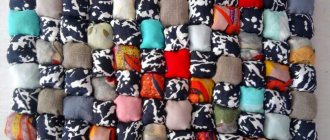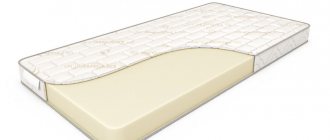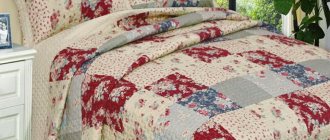Choosing the best fabric for sewing a tablecloth
The comfort and harmony of the interior lies in the details.
An elegant and correctly selected tablecloth for the table can be such a small thing that can help you easily create a warm, festive atmosphere in your kitchen. The market is replete with a huge number of different ready-made styles, in which it is sometimes quite difficult to find the ideal option for you.
In this case, the solution to the situation may be to decide to sew a tablecloth on your own, because then you can create your own unique design, giving free rein to your imagination and creativity.
What fabric can a tablecloth be made from?
Before you think through the style of your future tablecloth in detail, you should decide on the fabric that you will use.
The choice largely depends on your preferences and on what purpose and how often you intend to use your tablecloth.
An important factor is the composition, since the material used affects not only the price, but also the durability and safety of the product. Different fabrics are equally widely used for sewing tablecloths:
- Natural cotton. A fairly common and almost classic option. A tablecloth made from natural fabrics can be not only discreet, plain, but also openwork, decorated with lace. It tolerates high temperatures well and is very easy to iron. However, with numerous washes, the color of the tablecloth may fade, and it itself may “shrink” noticeably, even if you comply with the temperature regime. Cotton fabrics absorb moisture well, so their use is recommended for sewing napkins.
- Synthetic, made from polyester. The material is quite inexpensive, and tablecloths made from it are durable, resistant to mechanical damage and will last you much longer than natural ones. They do not absorb moisture, so spilled sauce will not be a disaster - contamination can be easily removed with a regular paper napkin. They stand up well to numerous washes. Thermal loads are contraindicated: the fabric easily burns and ignites quickly and is not entirely safe for daily use in the kitchen.
- Blended, combining polyester and cotton. Such fabrics are practical to use and quite durable in comparison with natural or synthetic ones. Tablecloths made from mixed fabrics practically do not wrinkle, are less susceptible to shrinkage and retain their bright, rich color much longer, even after many washes. However, they are very temperature sensitive and should be washed in cold water.
How to choose the right fabric?
The fabric should be selected based on your needs. For celebrations or daily use, you can use completely different materials. Mixed fabrics are best suited for everyday use due to their low price, durability and extreme unpretentiousness. They wash easily and do not lose color or shape.
However, it is worth considering that placing hot dishes on such tablecloths is not the best idea. Additionally, you will need a special stand and napkins for plates. Tablecloths made of synthetic materials are also well suited for these purposes.
note
And having chosen a stylish style, you can set the table with such tablecloths for receiving guests and friendly warm evenings.
For holidays and so-called “special occasions”, expensive, noble materials are better suited. For formal serving, you can use natural cotton fabrics with their elegant and stylish look. A noticeable advantage for them is that they can be decorated with lace and give complete freedom to your imagination, creating truly exquisite styles.
"Barbatextile" is the right choice for purchasing fabrics
If you have already decided which tablecloth you want to sew and for what occasion, our online store will help you choose the right fabric. The assortment includes a larger number of natural, synthetic and high-quality blended fabrics at reasonable prices, so you will definitely choose the ideal and profitable option for yourself.
Source: https://barbatextile.ua/presscenter/barbatextile/vybiraem-luchshuyu-tkan-dlya-poshiva-skaterti/
How to choose fabric for a tablecloth
May 20, 2014 admin Home page » Accessories and decor
When you want to update your interior, the best and simplest solution is to change the textiles.
Indeed, it is enough to replace curtains, tablecloths and napkins, hang pictures, and the decoration of the room will immediately sparkle with new colors. The choice of fabrics, especially table textiles, should be approached thoughtfully.
For tablecloths, napkins and napkins, not only beauty and compliance with the interior are important. Table textiles are very susceptible to mechanical stress - when dishes are placed on them, something can be crushed, spilled or dropped.
Therefore, when choosing fabric for a tablecloth, it is necessary to take into account the strength, ease of care and wear resistance of the material. The most common materials for tablecloths in production are described below, along with their strengths and weaknesses.
Cotton tablecloth
Cotton is one of the most popular fabrics for table linens.
Advantages:
- high hygroscopicity (quickly absorbs liquids);
- durability (a cotton tablecloth can last up to one and a half years);
- easy to iron;
- allows washing at high temperatures;
- Thanks to its texture, cotton allows the tablecloth to look very attractive
Flaws:
- fabric may shrink after washing
Linen tablecloth
Linen - Material made from natural fibers. When choosing fabric for sewing a tablecloth, linen attracts the most attention.
Advantages:
- prestige and effectiveness. A linen tablecloth will always look solid and rich;
- natural material,
- eco-friendly,
- "breathing";
Flaws:
- high shrinkage;
- problematic in ironing;
- dyed linen fades easily (dying linen is a labor-intensive and difficult process, but even the highest quality dyeing does not allow linen to retain color for a long time);
- wrinkles very easily;
- Loses its effectiveness after just a few washes
Blended fabric
Blended fabrics - Blended fabrics contain both natural and synthetic fibers. The percentage of synthetic and natural components may vary, but for table textiles the most suitable would be a mixed fabric containing 50-30% cotton or viscose and 50-70% polyester.
Advantages:
- do not shrink;
- more durable;
- easy to wash;
- practically do not wrinkle;
- their color is more durable (over time the color may fade a little, but this will not be too noticeable)
Flaws:
- low fire resistance (cotton is burned under the influence of cigarette ash in half a minute, mixed fabric in just 15 seconds);
- it is impossible to boil table textiles made of mixed fabric (they can only be washed at a temperature of 40-60°C);
- Mixed fabrics require dry cleaning from time to time.
Synthetics
Synthetic fabrics - the composition of synthetic materials is 100% polyester.
Advantages:
- unpretentious to use;
- do not absorb liquids (any liquid can be removed from the surface of a synthetic tablecloth with a paper napkin almost without leaving a trace);
- bright and durable color.
Flaws:
- They do not tolerate high temperatures when washing, as well as “neighborhood” with mixed and natural fabrics in the washing machine. All this can lead to damage to the fibers of the tablecloth;
- extremely low fire resistance (cigarette ash melts such a tablecloth with lightning speed).
What fabric is best to make a tablecloth from?
In general, the range of materials for sewing in our time is quite wide.
The choice of fabrics for table textiles on the kitchen table should be based not only on personal desires and preferences, but also taking into account practicality, wear resistance, ease of use and quality of the fabric.
If you take into account all these factors when choosing fabric, then table textiles will last a decent amount of time and will be pleasing to the eye.
Source: https://domashniy-ray.ru/decor/tkan-dlya-skaterti/
How to choose the right fabric for tablecloths
So, you have decided to update the interior of your establishment with table textiles and don’t know what you should pay attention to so as not to get confused in the huge variety of textiles? Then you've come to the right place. Our company’s specialists will competently help you choose exactly those products and fabrics that are suitable specifically for your establishment, without overpaying extra money.
What should you pay attention to when choosing tablecloths, table covers, and napkins?
Color and pattern – If you are just opening a restaurant and you don’t have any textiles yet, then you can choose any fabric you like that will look harmonious in the interior of your restaurant. If you decide to buy new tablecloths to complement your existing ones, you need to try to select fabrics not only by color and pattern, but also by composition, texture and shape.
Making your own napkins
When napkins sewn in the same style lie on the tablecloth, it looks beautiful and rich. You can also make napkins with your own hands from leftover fabric, or by planning the consumption in advance. Moreover, doing this is not difficult, like sewing a tablecloth.
First you need to decide what shape the napkins will be: square, rectangular or round, then outline the size, add seam allowances to it and cut it out.
Then repeat the same steps as when sewing a tablecloth: iron the hem, work the corners, stitch the edges. The decor of the napkins can match the decor of the tablecloth, you can reduce it proportionally or come up with a different design. Two-color product
Fabric for making tablecloths for restaurants
For celebrations and memorable dates, many of us choose a cafe or restaurant. Decorative elements, comfortable furniture and, of course, festive textiles will help create a cozy, home-like atmosphere. Our article will tell you how to choose a suitable tablecloth for use in such places, as well as an overview of the best fabrics that make the holiday cozy and memorable.
Material requirements
Of course, the requirements for this element are in many ways similar to the choice of a tablecloth for home use.
Exceptions would be increased strength characteristics, because even in the most densely populated house, tablecloths are not subject to as many washes as in catering establishments.
In addition, the quality and appearance of the tablecloth must necessarily correspond to the status of the establishment, so the savings in this case will be completely unjustified. But what a square tablecloth looks like and where it can be used is indicated here.
Other characteristics required for restaurant tablecloths:
The choice of fabric is an important point. Not only the overall design of the holiday room, but also the duration of operation will depend on this.
Of course, but such material should not have stains, holes from cigarettes and other signs of a fun pastime. That is why many restaurateurs use a cunning technique - they lay an additional one on top of the main one.
This tablecloth is called naperon and, with the proper attention to detail, can completely transform the appearance of the table.
You may also be interested in information about how tablecloths are used on the table every day.
Fabrics used
- Cotton and linen were previously used everywhere . This is an excellent option for natural fabrics, but they require special treatment and must be ironed and starched. Without this, it will be difficult to straighten the “difficult” flax fiber, and the table will not have the desired appearance. Natural fabrics dyed in thematic national patterns look beautiful. This helps give the room additional color.
- Adding synthetic fibers to the composition can solve problems with ironing and quick drying of the product, but you should choose the most dense and non-slippery fabrics, without the characteristic shine of polyester. Tablecloth for restaurants with the addition of synthetics
- There are special coatings that provide increased moisture resistance and weave strength. As a rule, this option is used more in cafes, because for an expensive restaurant such a matter would be nonsense.
- Polyethylene and Teflon tablecloths, despite their great practicality and long service life, are not in such great demand. This is due to the fact that self-respecting establishments cannot offer guests this option. An expensive restaurant must have chic woven tablecloths; this, by the way, is one of the criteria for choosing a good establishment.
In addition, there is a special gradation of table textiles. Lower tablecloth, upper cloth, runner and even disposable portion sets for each device. Choosing the right option is not so easy, especially considering that all this should fit perfectly together.
Pay attention to the drying speed of the material
Of course, there is no equal to synthetics in this parameter. And, in principle, a synthetic tablecloth is a completely acceptable option for daily use.
Washing such a tablecloth is a pleasure. And stains don’t eat into it that way and it dries in a matter of hours.
But for festive tablecloths this parameter is absolutely unimportant. Let it dry for at least three days, holidays don’t happen every day.
Tablecloths for the table: rules for decorating with fashionable textiles
Tablecloths for tables have been known since the times of Ancient Egypt. Such a tradition may seem the height of impracticality, because any fabric tends to get dirty, and no one wants to wash the product every day.
Today we’ll talk about how to choose textile decor elements for everyday use in the fashionable colors of the season or for special, special dates.
Let's discuss the type of fabrics for tablecloths, their features and properties of the material.
Criteria for choosing tablecloths
It is a mistake to think that a tablecloth is the prerogative of only holidays, because it is also very convenient for everyday use. Textiles will not only protect the tabletop from stains and scratches, but can also instantly refresh the interior.
In order to avoid getting into a difficult situation when purchasing or ordering a covering, you need to measure the width of the tabletop and its length if the shape is rectangular, and its diameter if the furniture is round. Do not forget that you need to add the desired length of the overhangs to the measurements obtained.
Main selection rules:
- It is better to choose a tablecloth for a rectangular table of the same geometric shape. If you want to experiment, then buy an oval-shaped product. It will look good if the overhangs are long.
- A tablecloth for a square kitchen table is universal. In this case, the shape of the textile can be very different. To achieve an unusual effect, buy round, oval or rectangular options.
- Selecting textile models for a round table is more difficult. Here it is better to avoid experiments and go along the classic path - a rectangular model with long overhangs or a round model.
- A large rectangular tablecloth on an oval table is the optimal and fresh solution. In addition, oval varieties are suitable.
Which tablecloth models will be relevant in 2021
When answering the question of what a tablecloth should be like on the table every day, you should think about unobtrusive, pleasant shades and durable fabrics that are not afraid of frequent physical impact.
The material of the tablecloth for the celebration should also be practical. Of course, when choosing textiles, you need to be guided by general interior trends, but if you decide to make your dining room unique and stylish, pay attention to the following new items for 2018.
Durable synthetic
The simplest textile option is synthetic. In the new season, rely on large prints, geometric patterns and bright colors. The material is easy to use, washes easily, dries quickly, is ideal for ironing, and virtually no stains remain on the fabric.
If the furniture is located near a window, then you don’t have to worry that the fabric will fade from the sun’s rays. The only disadvantage of synthetic materials is the increased fire hazard, so you will have to eliminate the use of candles and place special coasters under hot dishes.
Teflon impregnated models
It is best to place such a tablecloth on a kitchen table. You can easily place hot dishes on it, and the Teflon impregnation tends to repel liquids, preventing them from being absorbed.
If your guests spill red wine on the surface, which 99% of the time cannot be washed off, the droplets will remain on the surface and can be easily wiped off with a napkin.
Washing this tablecloth is as easy as shelling pears.
Oilcloth for the kitchen
If children live in the house, this is not a reason to refuse to use the coating. Remember the good old oilcloth. The cost of the material is budget, so even if you suddenly damage the oilcloth, there will be no problems with replacement.
It will become indispensable when used on an open veranda or in the yard, as it is not afraid of rain. Remember that you will have to place trays under hot dishes to avoid damaging the surfaces.
Cotton models
When asked which fabric is best for a tablecloth, many will confidently answer cotton. Indeed, this is a natural material that has not lost its leading position in production for several decades. In the new season, we advise you to pay attention to simplicity and geometric design.
Cotton is suitable for decorating a candy bar. Nowadays, at birthdays and New Year's parties, it is customary to organize a separate area for sweets. Cover the surface with cloth and place various sweets and delicacies for everyone to see.
Linen options
An equally good solution for lovers of natural fabrics is linen. Pleasant texture and natural shades will bring a feeling of warmth and comfort to your kitchen.
The fabric can have varying degrees of grain: from an almost smooth surface to a large weave. One thing is important: it is beautiful, but not very practical. The fabric shrinks a lot with frequent washing and gets dirty easily.
And if there are remnants of drinks or food on the surface, it is impossible to remove them without damaging the fiber structure.
If the material has shrunk a lot after washing, the size of the product can be increased by sewing scraps of the same material around the perimeter of the product, hiding the seam with a decorative frill, or crocheting the tablecloth onto the table by stitching crocheted lace.
To make a linen product pleasing to the eye longer, use napkins, decorative runners and placemats. This not only increases the service life of textiles, but also decorates the interior.
What fabric to choose for a tablecloth for the kitchen or living room
Only in a fairy tale do dishes appear on the table from a self-assembled tablecloth; in life, the tablecloth and dishes are the fruit of the culinary efforts and artistic preferences of the hostess. Before finding the answer to the question of how to choose a tablecloth based on shape, pattern and color, I will allow myself a short historical and lyrical digression. The tablecloth, as a piece of furniture, dates back several thousand years.
I don’t know when and by whom the first tablecloth was laid on the table, but I am sure that it was a woman. While fingering the threads of the loom, admiring the fabric coming out from under its shuttle and looking around her home, one of us, who lived thousands of years ago, spread it out on a table darkened by time.
Bringing beauty and warmth into the family nest is a privilege and a special ability of the beautiful halves of humanity.
But it’s time for us to return to the practical side and rules for choosing a tablecloth.
Read below:
- Tablecloth for holidays and for every day
- Choosing a tablecloth depending on the setting
- Determining the quality and type of fabric for the tablecloth
Tablecloth for holidays and for every day
Offers of tablecloths from manufacturers interrupt all our fantasies, and it’s not surprising to get lost in this “ocean” of models. Therefore, we will draw up a reminder on the topic “How to choose the right tablecloth,” which will help us not to drown in the waves of lace, satin and colorful prints.
Take a piece of paper and a pen and write down:
- The room where the tablecloth will be placed (kitchen, living room, dining room)
- Table shape and dimensions
- Interior color scheme
- Purpose of the tablecloth (festive, everyday)
- Quality and type of fabric
By the way, if it’s more convenient for you, you can make a recording in your gadget. It won’t get lost like a piece of paper and will always be at hand.
Choosing a tablecloth depending on the setting
Room
Linking accessories to the room is the key to an organic combination of color, shape and purpose. The living room requires light pomp and pathos; it expresses the taste of the hostess, her stylistic and design preferences.
Obviously, a tablecloth for a formal room should look expensive and luxurious, but not go beyond the color scheme of the entire interior.
note
Matte shine of satin or lace around the edge, satin stitch embroidery or airy hemstitching - these are the options for making a tablecloth for the living room.
What tablecloth should you choose for the kitchen? We must apply the term “practical” to it. This means that the material from which the kitchen tablecloth is made should not be afraid of frequent washing, have water-repellent properties and not be too slippery.
Table shape and dimensions
Tables come in square, round, oval and rectangular. Let's look at each in more detail. I will teach you how to choose a tablecloth for the table and how to take the dimensions of the tabletop so that your tablecloth fits beautifully and neatly on it.
- For a square table: we measure only the length of the tabletop (according to the laws of geometry, it is equal to its width).
- For rectangular: you need to remove both the length and width.
- For an oval one: we measure the length and width, keeping in mind that these are the diameters of the large and small ovals.
- For round: measure the diameter.
We add 40 cm to the resulting dimensions. We need them to obtain a “overhang” or “drop”. Mathematically this can be expressed as follows:
- a - tabletop length
- b - tabletop width
- c - length of the “drop”
The finished size of the tablecloth will be equal to a+c in length and b+c in width.
According to the classic rules of table etiquette, it is better to have a tablecloth that is too long than too short. A large overhang is a must for a tablecloth with lace, fancy cutouts or fringed edges. But overdoing it is also harmful; make sure that the tablecloth does not lie on the floor, otherwise your guests will step on it and pull it along with them.
So, if you have a tabletop 150x150, then the tablecloth should be 190x190. Stores offer standard sizes, so choose one that is slightly larger than your measurements.
Color design
We decide which tablecloth color to choose based on the following factors.
White is the king of colors. This tablecloth model will suit any interior. Next, we look for an option depending on what we want to achieve by using such a traditional accessory.
If the entire interior is designed in pastel colors, we select the color of the tablecloth, starting from one shade. In a beige and green room it will be either green or beige.
In blue - steel, gray or blue. For a bright, catchy interior, take a tablecloth in neutral tones.
In the kitchen, it is permissible to use colored tablecloths, checkered, with prints of fruits or cutlery.
Festive or everyday
This is the easiest point in our task “how to choose a tablecloth”. For the festive table, we choose tablecloths decorated with embroidery, lace, and hemstitching. Such decorative elements enhance the festive atmosphere and add a sophisticated touch to the interior.
By the way, if you feel sorry for an expensive tablecloth, you can use a tablecloth. These are small rectangular tablecloths that are placed on top of the main tablecloth to protect it from dirt and damage.
For daily use, I advise you to buy an inexpensive, moisture-resistant, easy-to-wash tablecloth.
Determining the quality and type of fabric for the tablecloth
Traditionally, cotton and linen fabrics are used to make table textiles. Cotton is pleasant to the touch, prevents slipping, looks good when starched, and is easy to wash, but it shrinks significantly.
Linen is highly practical, hygienic, holds its shape well, has a pleasant smooth surface, but is expensive. Atlas is beautiful, but the least practical. Slips, is afraid of chemicals, and is picky about washing.
Source: https://www.pillow.su/kakuyu-tkan-vybrat-dlya-skaterti-dlya-kuxni-ili-gostinnoj/
Based on the overall style of your kitchen
Basically, tablecloths are now on sale that fit perfectly into “Provence” type interiors. That is, these are all kinds of checks, stripes, polka dots, ruffles... It is very beautiful and cozy, without a doubt. But, if your furniture is in the style of minimalism or hi-tech, then what kind of stripes with ruffles can we talk about?
Such a tablecloth will look extremely inappropriate and, instead of adding chic, it will simply be annoying.
What else would I like to say: our job was to advise and warn, but you still know better which tablecloth is best for your kitchen.
